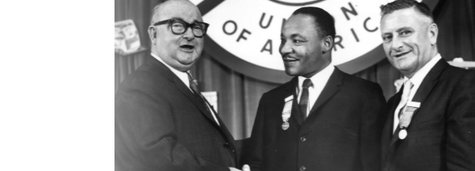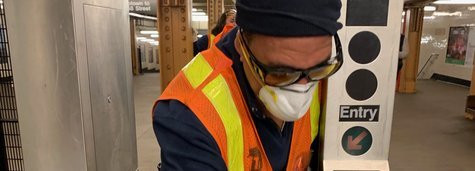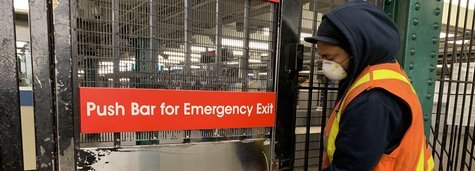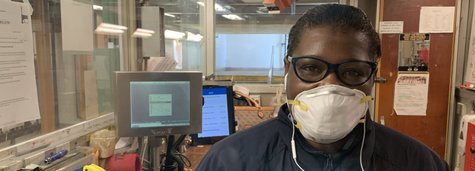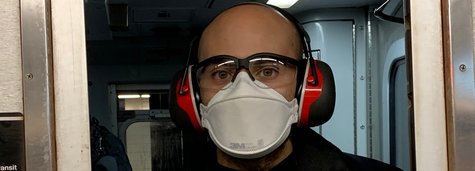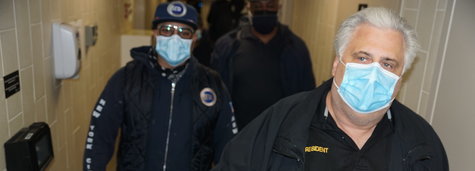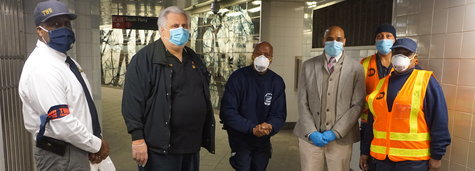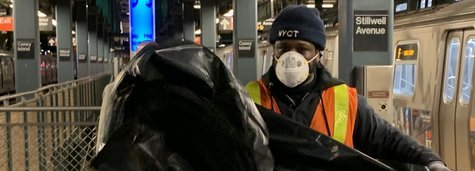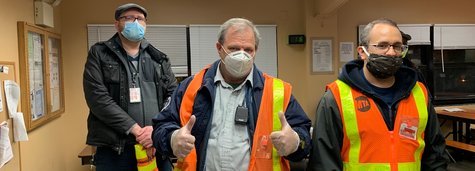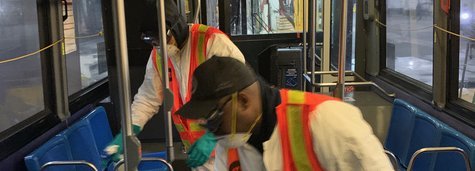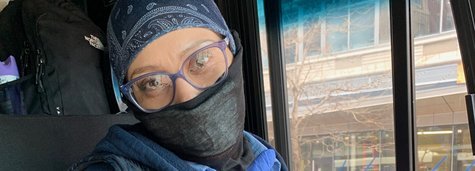What Vets Say
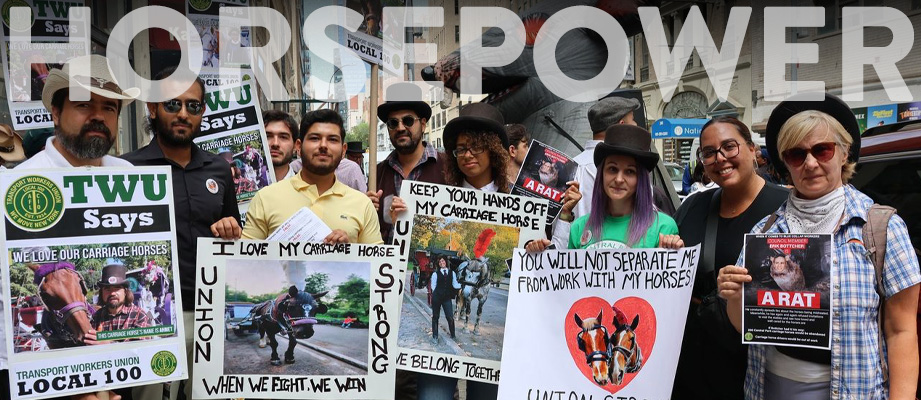
| Intro | | | Giving Back | | | Horse Care | | | What Vets Say | | | Union Support |
|
By Dr. Gabriel Cook, horse veterinarian and surgeon. Nearly a year ago, I became involved in a New York City tradition that periodically erupts into headline-grabbing controversy: horse-carriage rides in Central Park. It’s been quite a ride. I’m an equine veterinarian and surgeon with more than 32 years of experience evaluating and treating horses. I’m also a partner of the New England Equine Practice in Patterson, N.Y., where we have our own horse hospital. Since last August, I have been coming to the carriage horse stables with my staff every other week to conduct twice-annual horse exams, which are mandated under city regulations, and to handle other health-related concerns brought to my attention. I also have worked extensively with Transport Workers Union Local 100, which represents the drivers and owners. The goal is to not only follow the extensive NYC regulations but to exceed them. I can’t talk about the past. But after my involvement over the last 11-plus months, I can say without hesitation: the claim by “animal rights activists” that the carriage horses are not well cared for is simply false. Widespread abuse or neglect does not exist. Similarly, the broad-brush portrayal of carriage drivers as a bunch of greedy animal abusers is not only false, but a terrible injustice to these working men and women. I have met some truly wonderful and committed horse people: Mario, an immigrant from Italy living two of his dreams: raising a family in America and working with horses. Angel, whose first job after arriving from Mexico was cleaning horse stalls. He saved for years and just purchased his own carriage and medallion, becoming a small business owner in the trade. Jill, who quit her higher-paying office job, because she found caring for horses and spending her days with them more rewarding than sitting behind a desk. After we complete the scheduled physical exams at the stables (exams that we have made more rigorous), my staff and I often spend hours answering drivers’ questions, checking their horses, and dispensing advice and directives. We also frequently talk to drivers over the telephone — and provide telehealth consultation that can include reviewing video of individual horses. We have identified horses with issues and followed approved protocols, such as prescribing changes in their diet, additional rest, dental care, medication, further testing, and evaluations. We have identified horses with signs of colic (a common ailment among horses that can range in severity), and they were sent directly to our hospital for care. The owners and drivers I have interacted with have overwhelmingly been cooperative and have demonstrated genuine concern for their animals. With more than 120 carriage horses in New York City at any given time, there will always be health situations to address — just as there are with horses outside the city. The horses here are just more likely to be photographed and tweeted about, perhaps more so than any other group of horses in the world. While that can result in negative spins by some, the truth remains that when concerns are raised, the Department of Health investigates, and corrective action is taken when warranted. There also have been several significant other proactive initiatives enacted over the last 11-plus months: TWU Local 100 formed a Safety Committee of drivers and elected shop stewards to bring medical issues to our attention and provide a structure for positive change. TWU retained Tristan Aldrich, an expert horseman — who once worked at the Buckingham Palace stables in London — to help with the care of the carriage horses. He is in the park once a week observing the horses, flagging any health concerns, and promoting best practices to drivers. Dr. Anthony Blikslager, an equine surgery professor and the head of North Carolina State University’s Clinical Sciences Department, inspected the horses and stables at our request. Using an equine behavioral score developed by scientists, he found the horses showed all signs of being healthy and content. The horses he observed “were in excellent body condition” and “interactive with their handlers… interested in socializing with their ears forward and their heads in a normal position.” The stables “were all clean, well-ventilated, and with a reasonable temperature for horses.” The stalls were “adequate to allow horses to lie down.” The feed was “of excellent quality.” The stable staff “exceptionally hard-working and professional.” New Yorkers should know there is a genuine, ongoing effort to provide the best possible care for these amazing animals as there should be. They bring joy to so many park visitors from around the city, the country, and the world. Cook is an equine veterinarian providing physicals and other care to a majority of the Central Park carriage horses. Originally Published: July 31, 2023 at 5:00 AM EDT APR 08, 2015 — NY Daily News EXCLUSIVE: New York City carriage horses are stress-free even after long day of trotting, academic says By JENNIFER FERMINO You're probably more stressed than a New York City carriage horse, according to a new study.” A California academic who specializes in equine medicine conducted an intensive study of stress levels on Big Apple carriage horses and found them completely angst-free — even after a long day trotting in Central Park. Joe Bertone, who teaches at Western University of Health Sciences, said he became intrigued with the carriage-horse debate after visiting New York several years ago. “Vets I know and respected were telling me (the hors-es) were having a pretty darn good life, but I wanted to put some science behind it,” he said. In a study sponsored by the horse-carriage industry, which provided a $5,000 grant, he and his team analyzed the levels of cortisol — a hormone produced during stress in humans and animals — in 13 carriage horses at the Clinton Park Stables on W. 52nd St. over a three-day period in August. The animals were examined four times a day — mostly by taking saliva samples and checking their body temps — including right before they left for work and right after they got home. “I couldn’t find more content animals,” said Bertone, who is board-certified in internal medicine for large animals, with a specialty in horses. “They were very relaxed.” Ironically, Bertone did find some signs of stress in carriage horses — but only when they got out of town.He sent one of his students to Pennsylvania to check on carriage horses on their five-week furlough, which the city requires as a rest for the animals. Some of those horses had elevated cortisol levels, possibly because they were in an unfamiliar environment, according to Bertone. Bertone said he came up with the idea for the study himself. “My No. 1 concern is animal welfare,” he said.The research was presented at the Interdisciplinary Forum for Applied Animal Behavior in Texas in February, and will be featured at several other science gatherings this year. It remains to be seen if it can influence the horse-carriage debate here in New York. Mayor de Blasio is press-ing the City Council to ban the industry. A spokesman said the administration was looking for a “humane and equitable solution that moves the horses off our streets” while protecting jobs. Bertone said he noticed another sign that the horses were happy with city living — their sleep habits. In prior studies, he found horses won’t sleep when they’re stressed, no matter how tired they are. But during his visits to the Clinton Park Stables, “in the mornings, we heard them snoring,” he said. APR 20, 2014 — NY Daily News Vet: Carriage horses are healthy, happy and well cared for By DR. MARK JORDAN Last month, I accepted an open invitation to visit some of the city’s carriage horses at the Clinton Park stable. As the head of an equine veterinary practice in Carmel, Putnam County, I have been examining and treating horses for more than 32 years. I felt it was my responsibility to investigate the horses’ treatment from my own perspective as a veterinarian, horseman and advocate of animal rights. The purpose of this visit was to evaluate the horses’ living conditions as well as their current health. Before our trip to the city stable, my colleague, Dr. Michelle Singer, and I were both skeptical of the care that these horses were receiving. But we were pleasantly surprised by what we found. Contrary to what many may believe about these horses and the environment that they live in, the horses are in good health and are living in an appropriate stable with excellent care. These horses are being treated with pride and compassion, often by their individual owners/drivers. These horsemen provide care for these horses on a daily basis. On the days the horses do not provide carriage rides in Central Park, they are hand-walked to make sure they are out of the stall and exercised every day. Contrary to my preconceived thoughts, these horses do not live in straight stalls in which they are unable to move or lie down. Instead, the horses were housed in comfortable, clean, spacious box stalls, which allowed them to lie down in comfortable dry bedding. The box stalls are also large enough to allow the horses to move freely. The horses are also being provided with quality food and water throughout the day. After my first visit, I returned unannounced to talk with management and personal horse owners to better understand their perspective. Upon arriving, I still found the stables to be in the same good conditions that I had observed in the initial visit. During this second visit, after the stable inspection, I observed some of the horses arriving back from the park and other horses being hitched up to go out to the park. The horses did not appear at all overworked upon their return, and the outgoing horses were ready to take their shift. Next, we proceeded to the south end of the park to see the horses firsthand on the job. The horses at Central Park all were in good weight, well shod, and prepared for their carriage work that day. After much investigation, it was clear to me these horses are living happy lives with owners who truly care for their well-being. These owners/drivers are proud of their animals and provide them with excellent care on a daily basis. I strongly support the continuation of these carriage horses in New York City as an equine veterinarian, long-time horse owner and horseman. These horses are being loved and cared for earnestly and deserve the right to continue on as a historic tradition of the city. January 17, 2014 — NYTimes Carriage Horses I Inspected Were Healthy and Content By Harry W. Werner, a past president of the American Association of Equine Practitioners, owns Werner Equine in North Granby, Conn. In February 2010, I visited four carriage horse stables in New York City at the invitation of a member of the Carriage Operators of North America. I was accompanied by an experienced equine surgeon, as well as a veterinarian who is an horsewoman with a special interest in animal behavior. Given free access to all areas of the stables and to the horses’ veterinary records, we reviewed the husbandry, veterinary care and farrier care the horses received. Our daylong inspection ended with a carriage ride through Central Park, which enabled us to inspect the horses at work. The American Association of Equine Practitioners paid all expenses associated with our visit, and we were not compensated by the carriage industry. On a visit paid for by the American Association of Equine Practitioners, I was impressed by the conditions of the stables and animals. I was impressed by the cleanliness of the horses’ housing and the ample bedding in their stalls. While stall size varied, even the smaller stalls provided adequate room for the horses to stand, lie down and move about comfortably. Fire prevention was clearly a priority at the stables. Sprinkler systems, extinguishers and other fire emergency response equipment were present and clearly marked. All access and exit corridors were clear, clean, padded and of ample dimensions to facilitate safe passage by horses and handlers. Hay and grain quality was excellent and foodstuffs were stored in a manner that was secure from pests. Water was fresh and available freely to the horses. The quality of the farrier care provided for the horses was excellent. In the few cases where hoof condition had required therapeutic farriery, the care had been competently performed. All horses had up to date and complete veterinary care records which detailed wellness care and treatments for sickness or injury. The physical condition of all of the horses I observed was very good. I saw no evidence of inadequate nutrition or signs of injury or disease. We paid particular attention to the demeanor and behavior of the horses. We three visiting veterinarians brought nearly a century of experience working with horses on a daily basis – often tending to animals in pain. The carriage horses were calm and displayed behavior that reflected |
For more information on our campaign to support this industry contact Frank McCann: fmccann@twulocal100.org or call him at 917-488-8314. |

